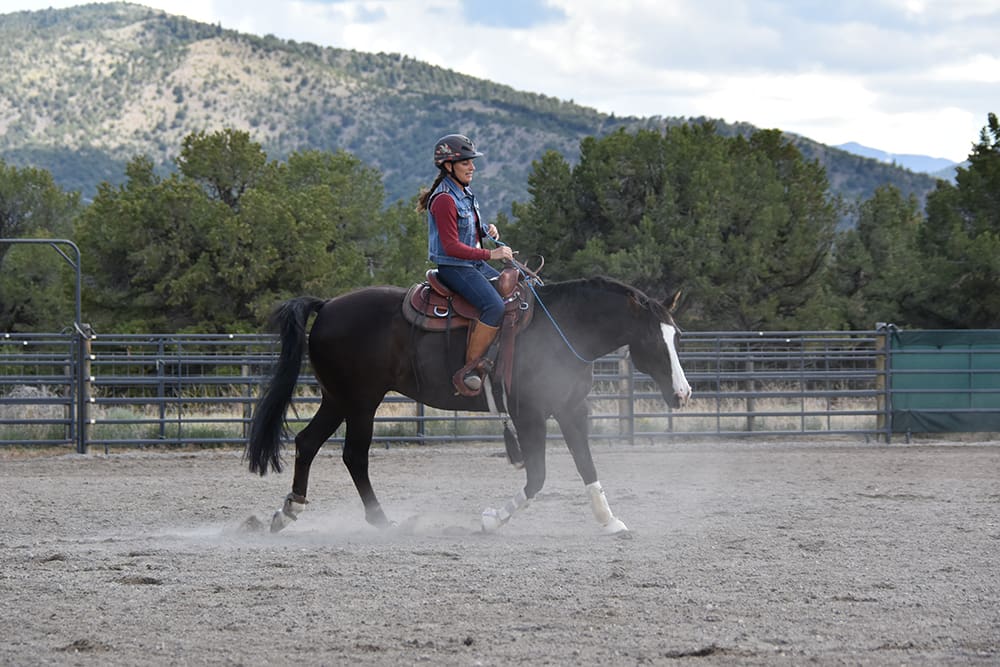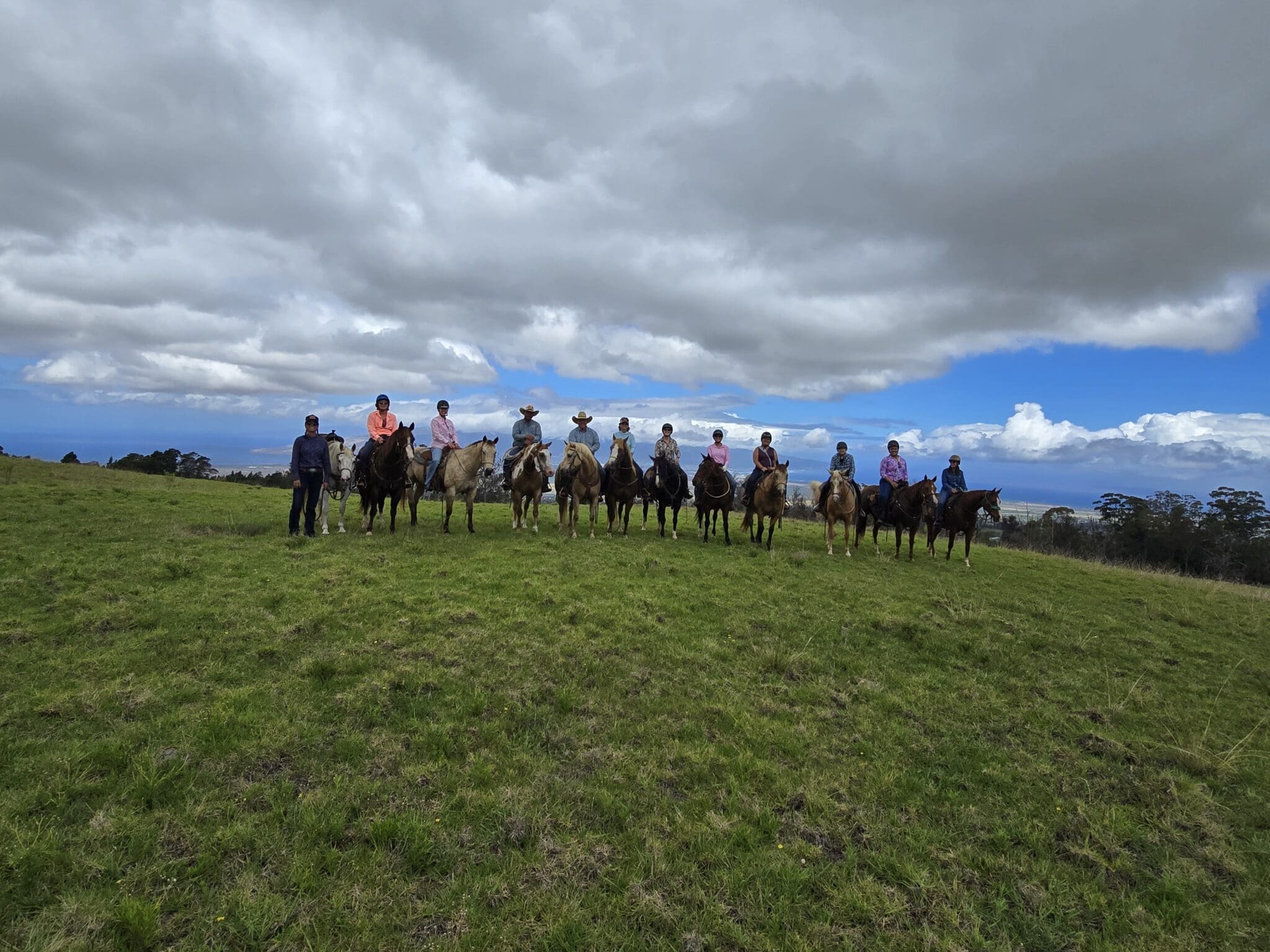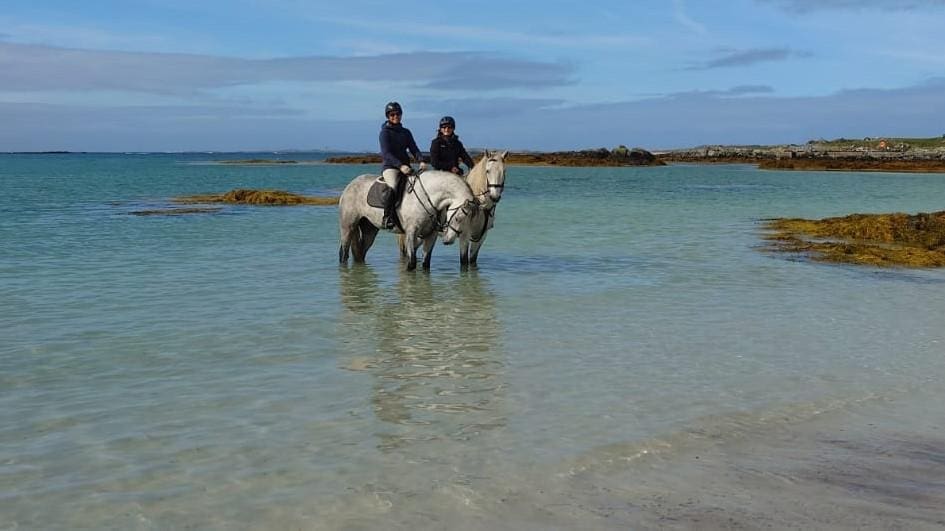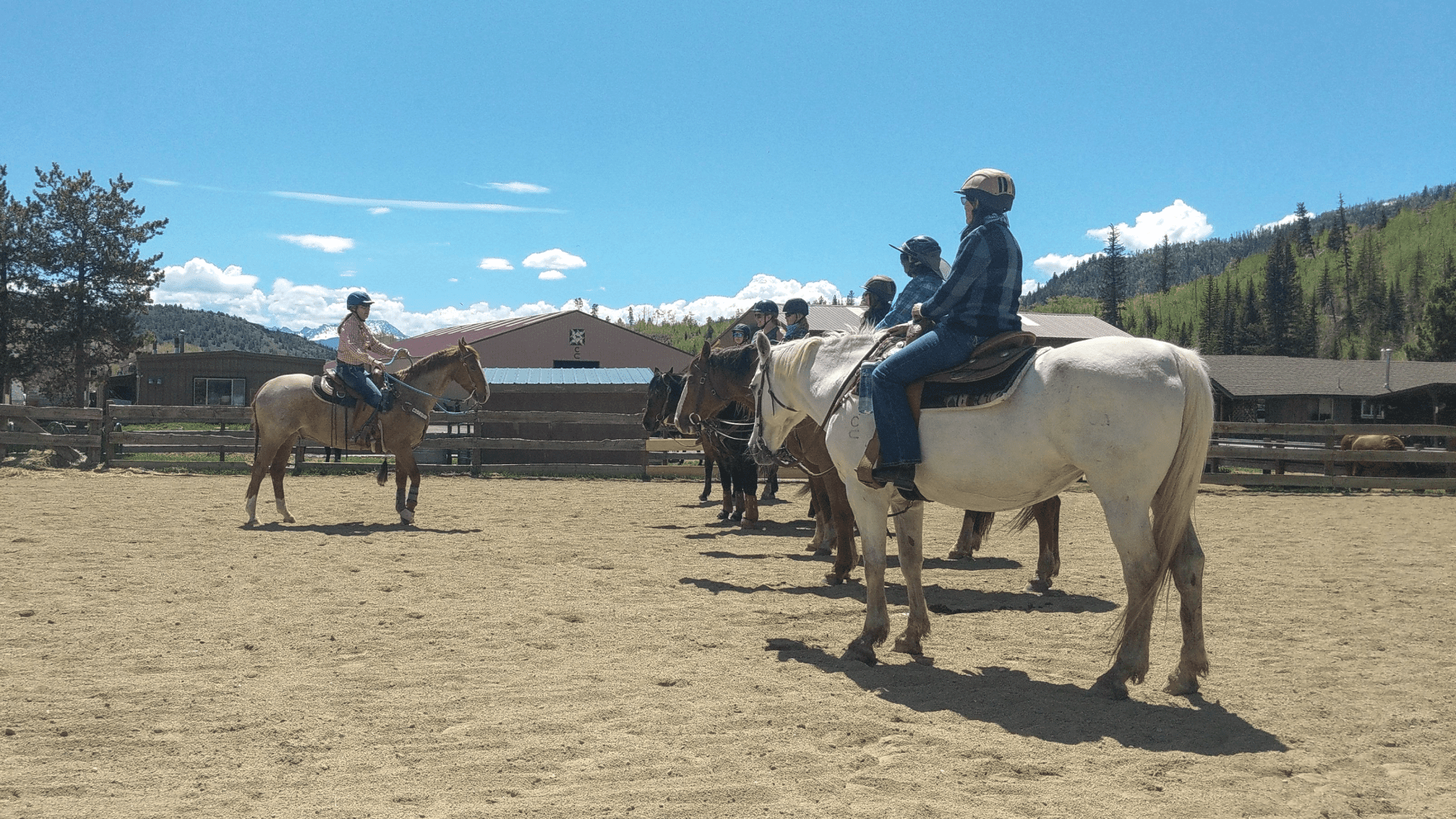
Become a more effective rider by perfecting a proper horseback-riding position.
Correct body position is as basic as it gets. Without it, you and your horse can’t balance properly, and you can’t deliver your aids correctly. It’s one of those things you need to master before you can really advance with your riding.
We’re talking about the alignment of a rider’s ear, shoulder, hip and heel. When you’re sitting on the horse, someone looking at you from the side should be able to draw a vertical line through the middle of your ear, shoulder and hip, going down behind the back of your heel. It’s pretty much the same position for all sports that require balance.
It’s interesting that although the stirrup length can change – as well as the type of the saddle – this basic alignment never does, whether you’re doing reining, western dressage, trail riding or English. It’s the same for all disciplines, because the horse is the common denominator.
This body alignment isn’t about looking pretty in the saddle (although it does look good). It’s about finding balance for yourself and your horse. He can’t be balanced, after all, if you’re out of whack on his back. Think about giving somebody a piggyback ride on your back. If he or she is lined up with your center of gravity, it’s much easier to keep yourself in balance than if your passenger is leaning forward or backward.
Sometimes being in balance is easier said than achieved, though. Riding is a challenging sport, because not only are you balancing while in motion (like snow skiers or ice skaters do), but it also requires the synchronized balance of two animals working together. And that second animal has a mind of his own, so he may not always move just exactly as you intended.
There are two types of balance for both horse and rider: longitudinal and lateral. Longitudinal refers to a front-to-back balance, and it can be challenged when your horse slows down or speeds up. Lateral balance – side to side – changes as your horse turns.
Sitting in the correct position, you’re just above and behind the horse’s center of gravity, and as an added bonus, your aligned body actually makes it easier to stay on board. It brings your skeletal system into alignment, and that in turn provides stability. Your skeletal system – not your muscle strength – is keeping you balanced and erect, and relaxed joints can act as shock absorbers to help you move fluidly with the horse.
Now that you have improved your position, improve your horsemanship. AQHA’s Fundamentals of Horsemanship will take you through the basics of horsemanship and help you become a better horseman or -woman.
I’ve read about a university research project in which it was proven that for beginners, riding is excellent strength-building aerobic exercise, while expert riders got very little exercise from riding. As you become a better rider, you’re moving with the horse, letting the horse move you, letting your good balance do all the work. Beginners have to use quite a bit of muscle strength to stay on the horse.
Riders who have to use muscle strength to stay secure in the saddle are riding into a vicious circle. By definition, using muscle strength means gripping and holding on. Plus, whenever you tighten your muscles, you lock your joints, which keeps you from being loose, fluid and able to follow the horse’s movement with your own body.
And when things go wrong from our driver’s seat in the saddle, you can bet that will have an effect on the horse beneath you.
Let’s take a rider whose shoulders are in front of her hips; she’s leaning forward in front of the vertical. If she’s on a forward-thinking horse, he’s going to take that as a cue to speed up. The rider might pull on the reins, which tips her even farther forward, and her lower leg slides backward and inadvertently squeezes the horse. Some horses will speed up even more then and run through the bridle.
Other horses who might be a little lazier and not quite so inclined to speed up will just learn to ignore those movements from the rider. In effect, the rider has just trained her horse to ignore seat, weight and leg cues – things that should be very important points of communication with the horse.
The good news is that there is a simple fix for these problems. You have to fix your body position. There’s no sense in talking about any other training issues with a horse. You can’t communicate effectively, and you can’t balance effectively if you’re not in position.
I think riders, even if they don’t have a regular instructor, can police themselves and make improvements on their own. Another set of eyes to critique you is wonderful, but a video camera works, too. Then, if you have the knowledge of what good body position should look like, you just have to have the discipline to work on it and constantly check in as you ride, asking yourself, “Am I doing this right?”
Here are some tips to get you started:
Ears
The easiest way to ruin the alignment from ear to shoulder is to look down, which brings your ear in front of your shoulder. That, in turn, tends to put the horse heavier on his forehand, which is not what we want. Keep your eyes focused ahead of you, looking where you’re going. Don’t look at your horse’s head.
It’s also common for people to jut their chin forward and tense their neck, which is a posture some people adopt when they’re concentrating. That changes your balance, and it’s also very hard on your neck. Again, any time you tense a muscle, you stiffen a joint. Even if you clinch your teeth, you are stiffening a joint, which causes tension where there shouldn’t be any.
Shoulders
If people don’t carry their tension and concentration in their neck, they often carry it in their shoulders. Tense shoulders lead to bouncing hands, which are highly detrimental to the horse. You want to have long and relaxed, but not rounded, shoulders. The solution is not to put your shoulders back, but to lift your sternum and sit as tall as possible.
Hips
Often, the most common problem riders battle is having their shoulders in front of their hips, which causes a closing of the hip joint. Your hips are the biggest shock absorber you have while riding, and having a full range of motion in the pelvis is critical to balance and to sitting the trot and riding smoothly with the horse. You get that by keeping your shoulders in line, so that the hip joint stays as open as possible.
Another important consideration is keeping your lower back flat and relaxed. Think about sucking your belly button in and tucking your tailbone underneath you, which also keeps the hip joint open.
Improving your riding position is only part of the battle; improve your horsemanship with AQHA’s Fundamentals of Horsemanship. Master the basics of horsemanship and improve the relationship you have with your horse.
Heels
The most common problem here is having the lower legs creep too far forward. It’s comfortable, which is why we do it, and unfortunately, many saddles are made with the stirrups cut forward, which encourages you to keep your leg too far forward.
Your calf is a major means of communication with the horse, and it has to be in contact with the horse all the time. You want your leg underneath you, just as if you were standing on the ground.
An easy way to self-diagnose: Glance down at your kneecap. If you can see your toe in front of your knee, your legs are too far forward.
More than likely, you’ve heard the “Heels down!” mantra. And your heel does needs to be long, but don’t force it too far down. That pushes your leg forward and stiffens your joints. You shouldn’t put much weight in your stirrups, either, because that leads to a tense leg and a bouncing rider. You’re pushing yourself out of the saddle. The more trouble you’re having staying on the horse, the less weight you want in the stirrups.
Think about stretching and lengthening your leg muscles, so you have weight in your heels. That’ll give you an anchor, and you won’t be fighting gravity.
These position problems can form as a result of bad habits, or maybe because of posture problems we have off the horse. Anything that helps with body alignment and core strength – such as yoga or pilates – is going to translate into better body position in the saddle. With self-awareness and self-discipline, you’ll be able to improve your body position – and that will help you become a more effective rider.



